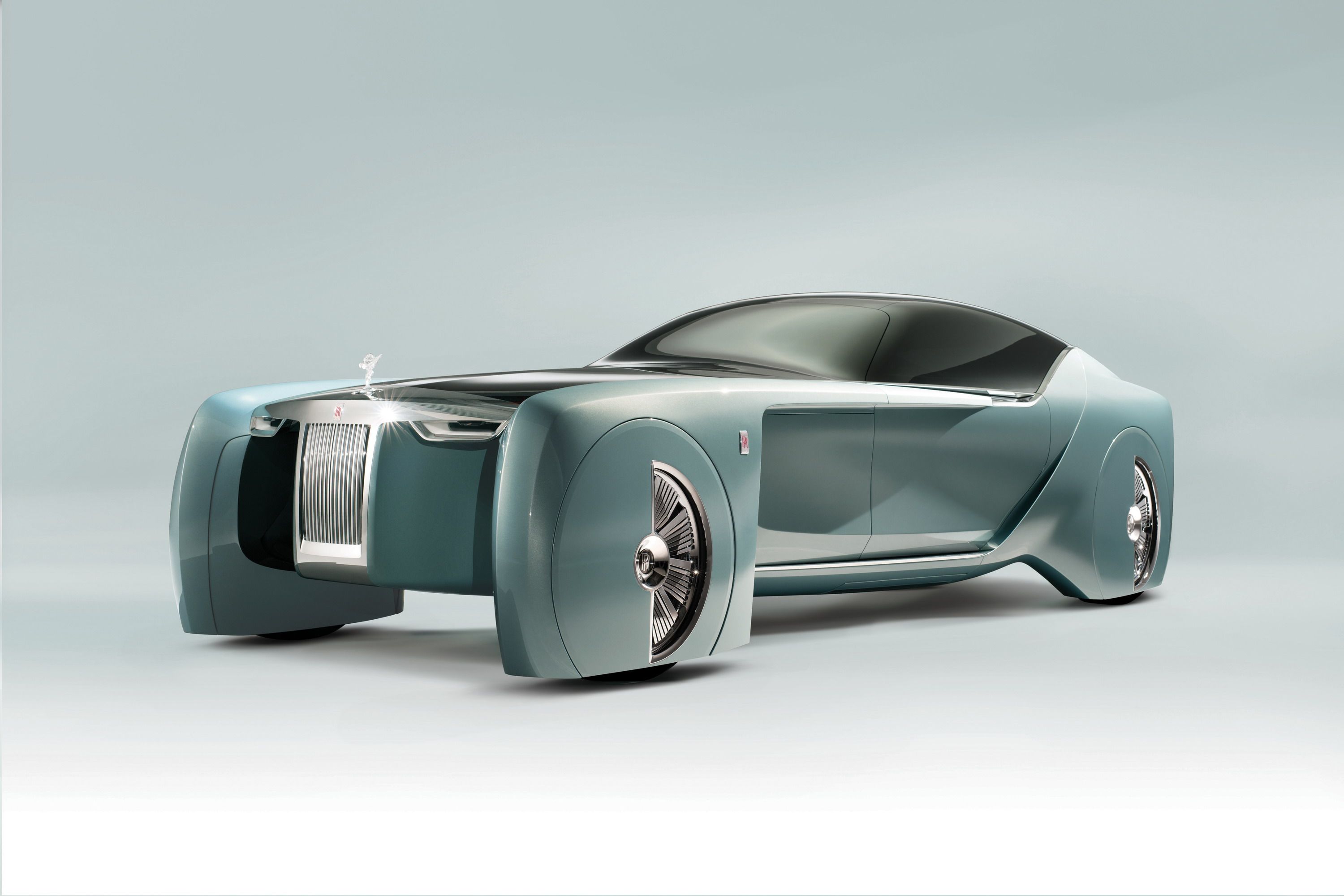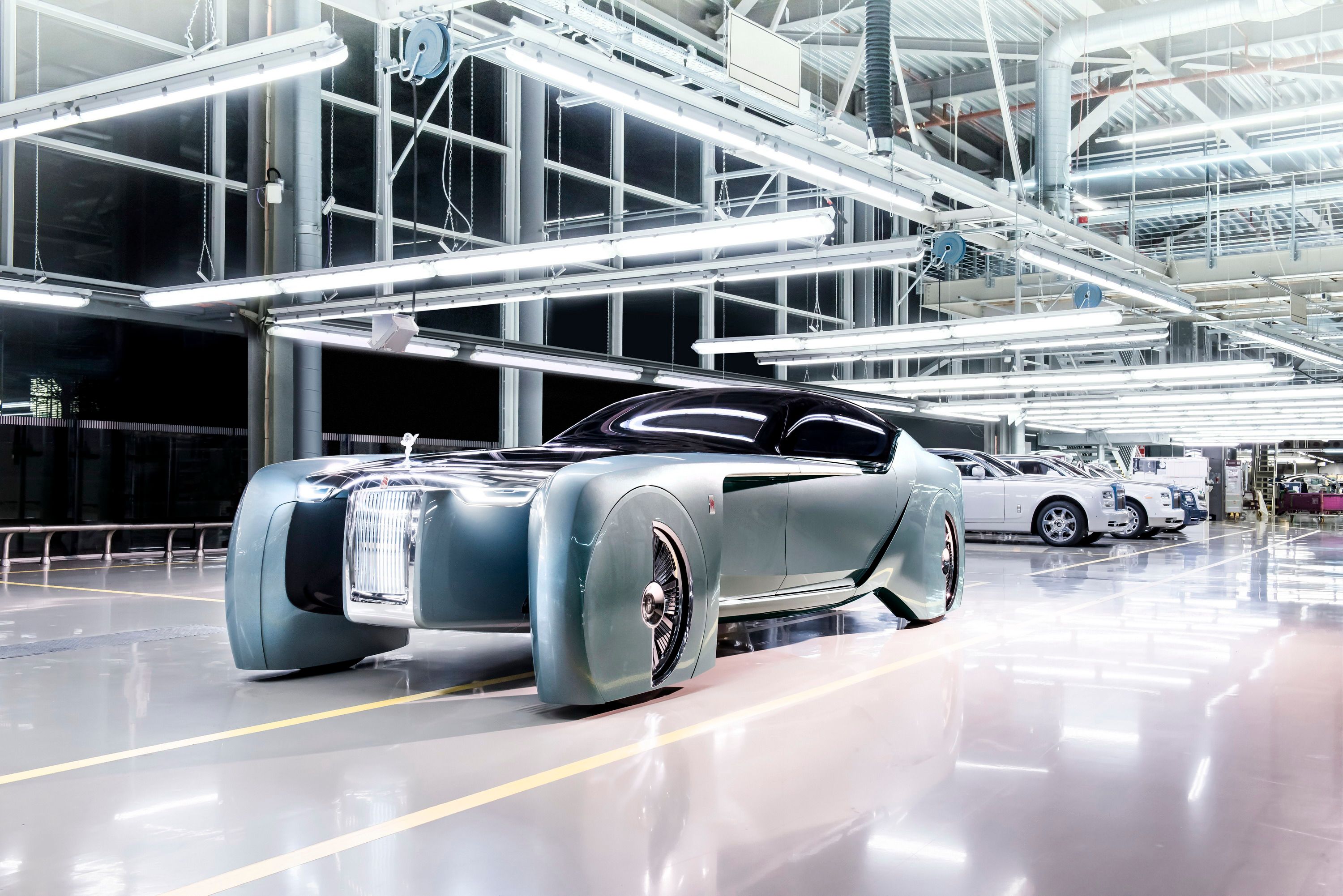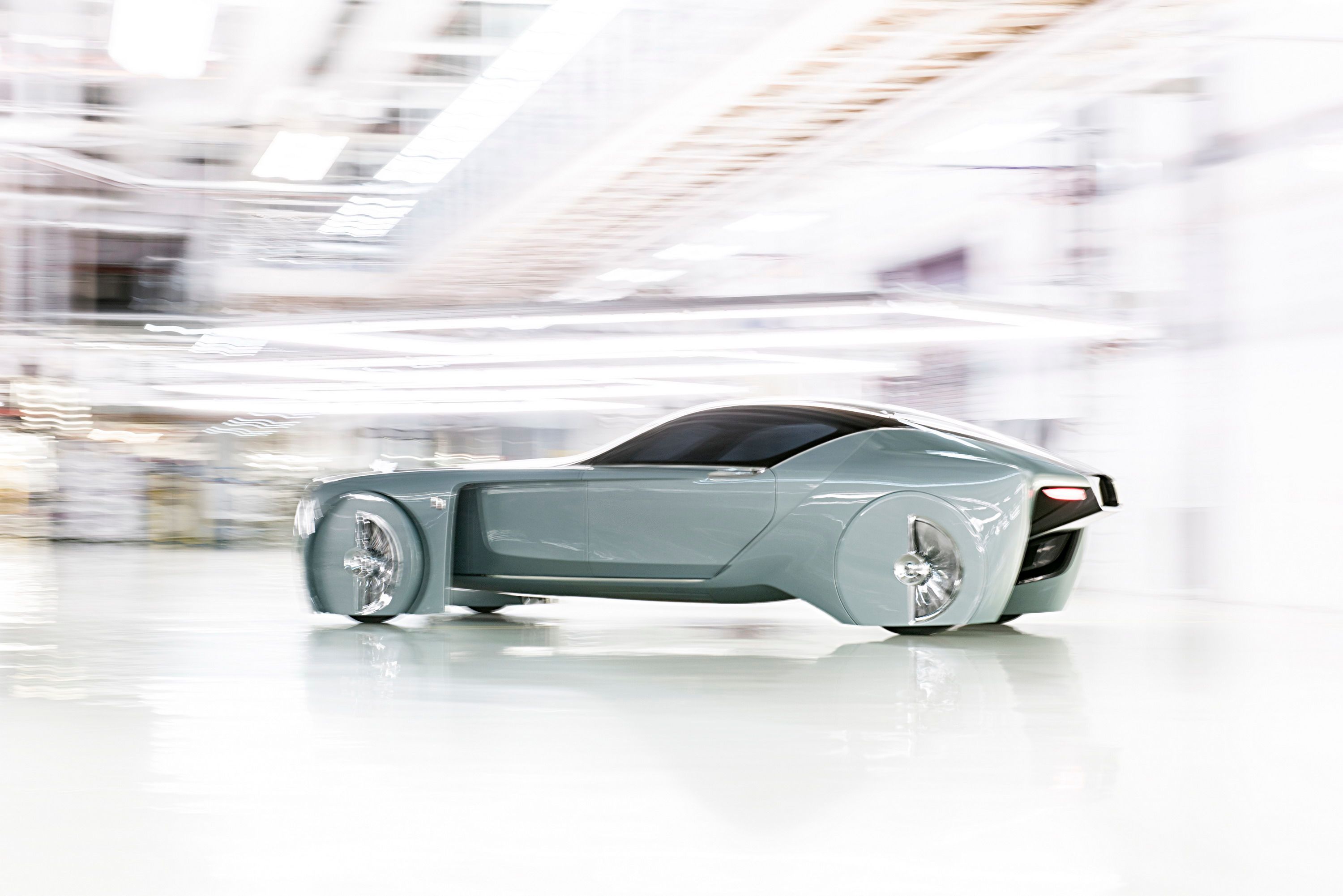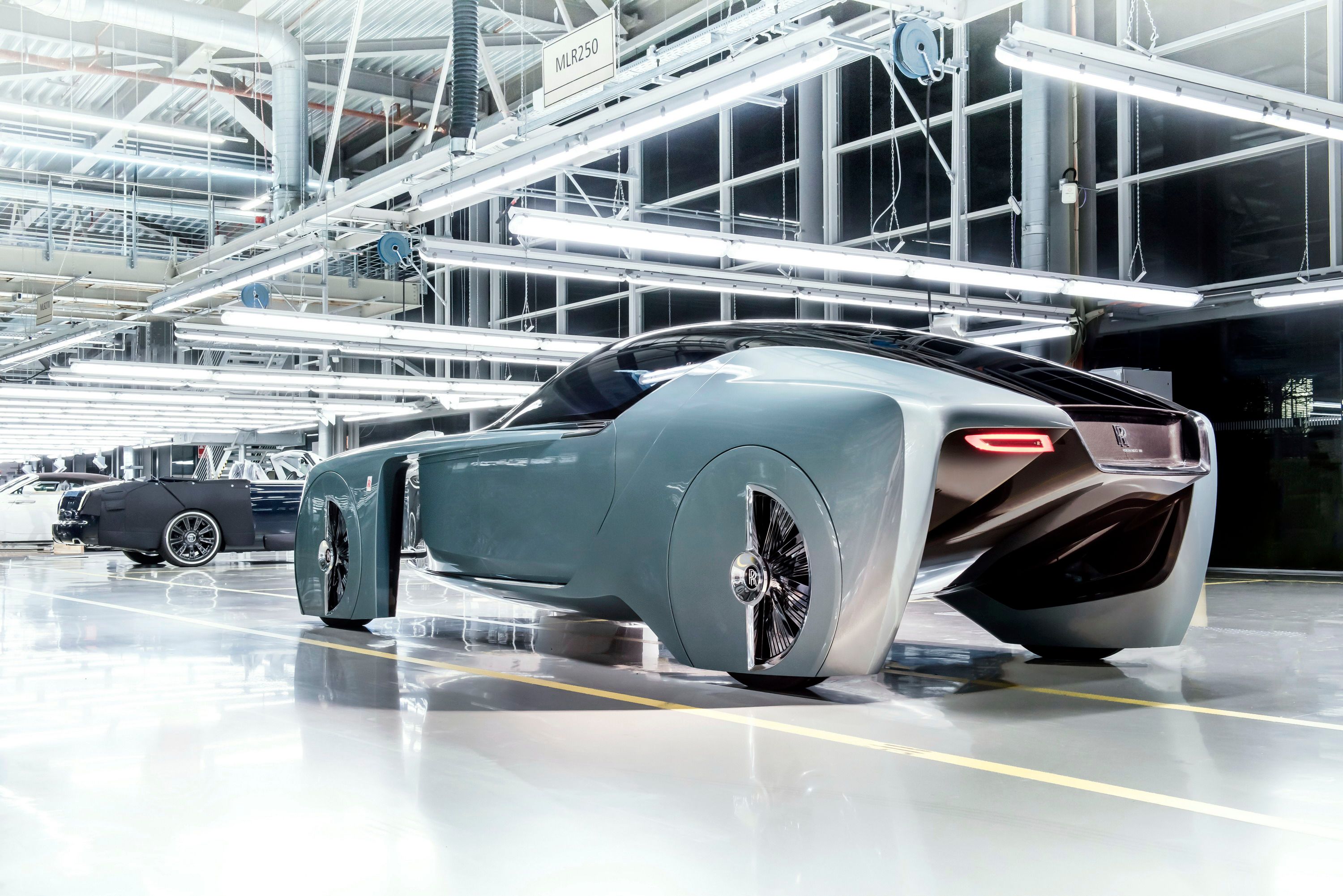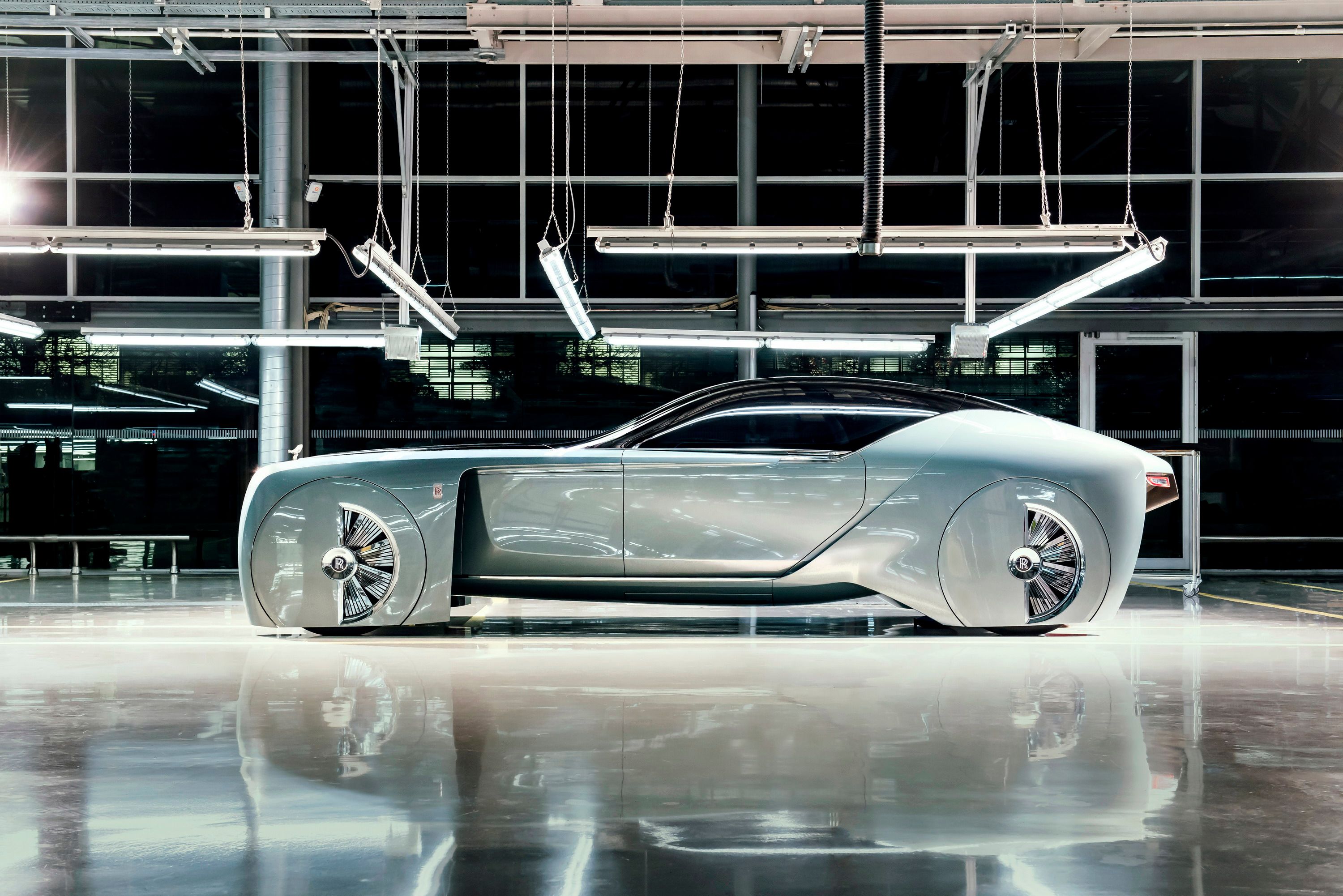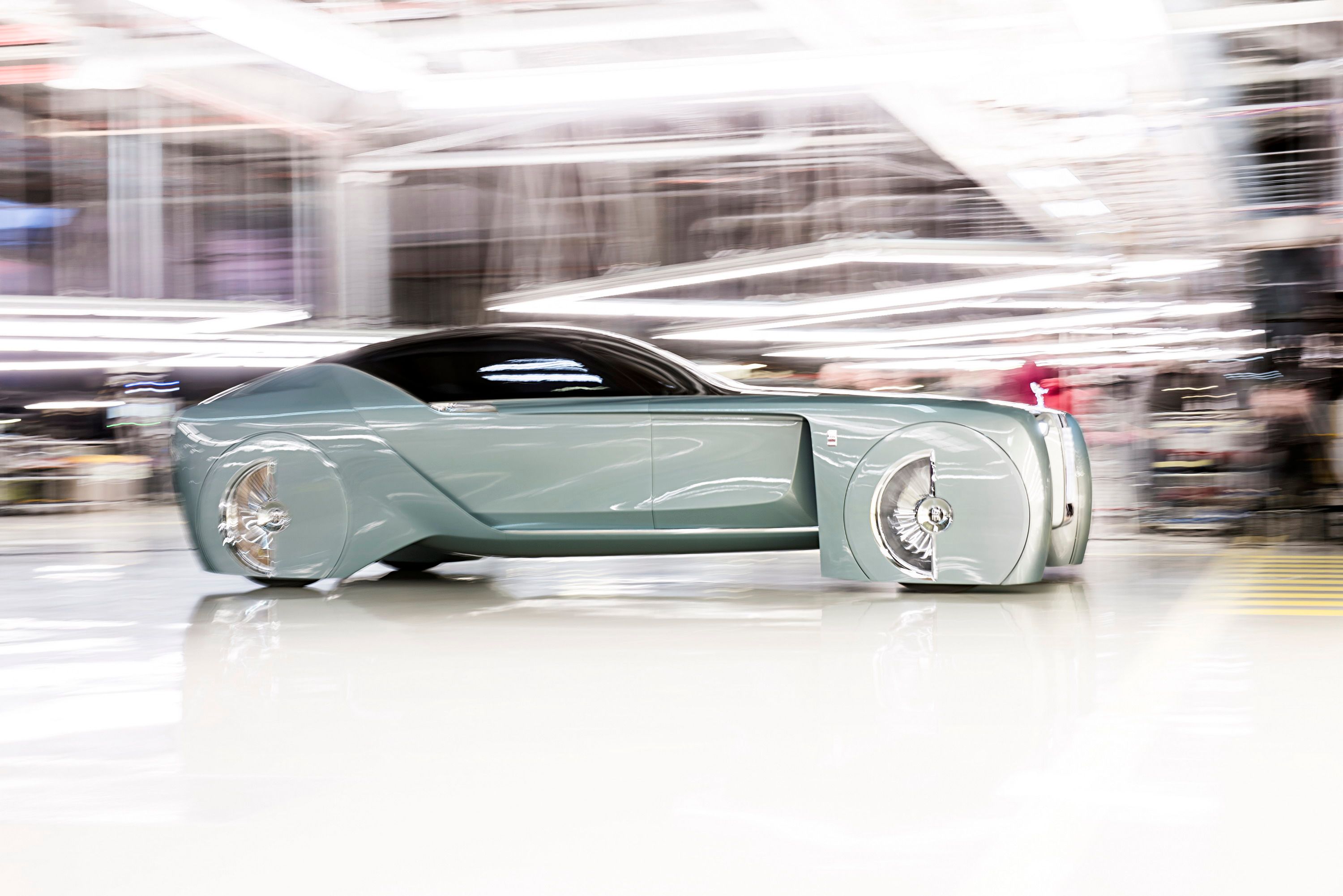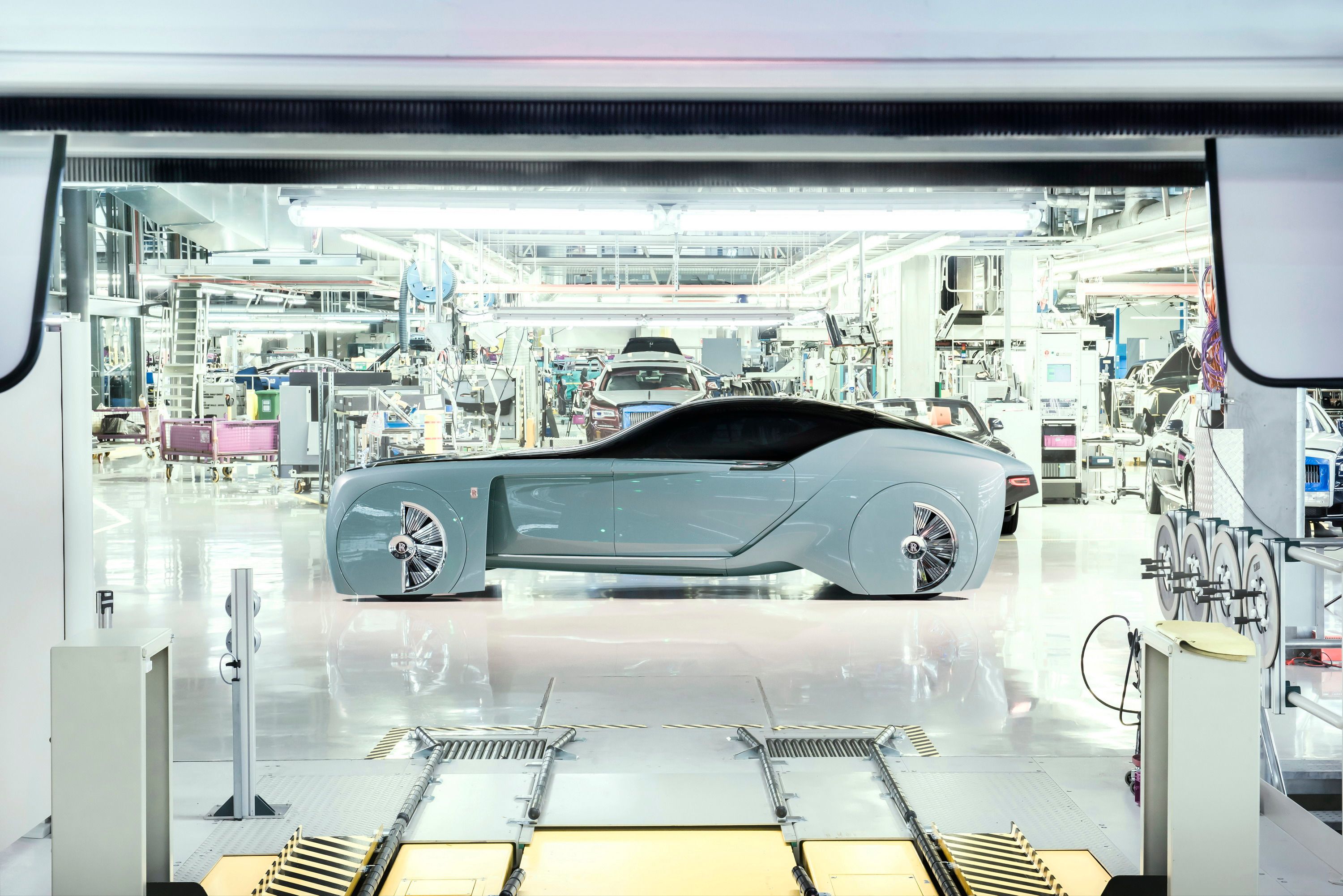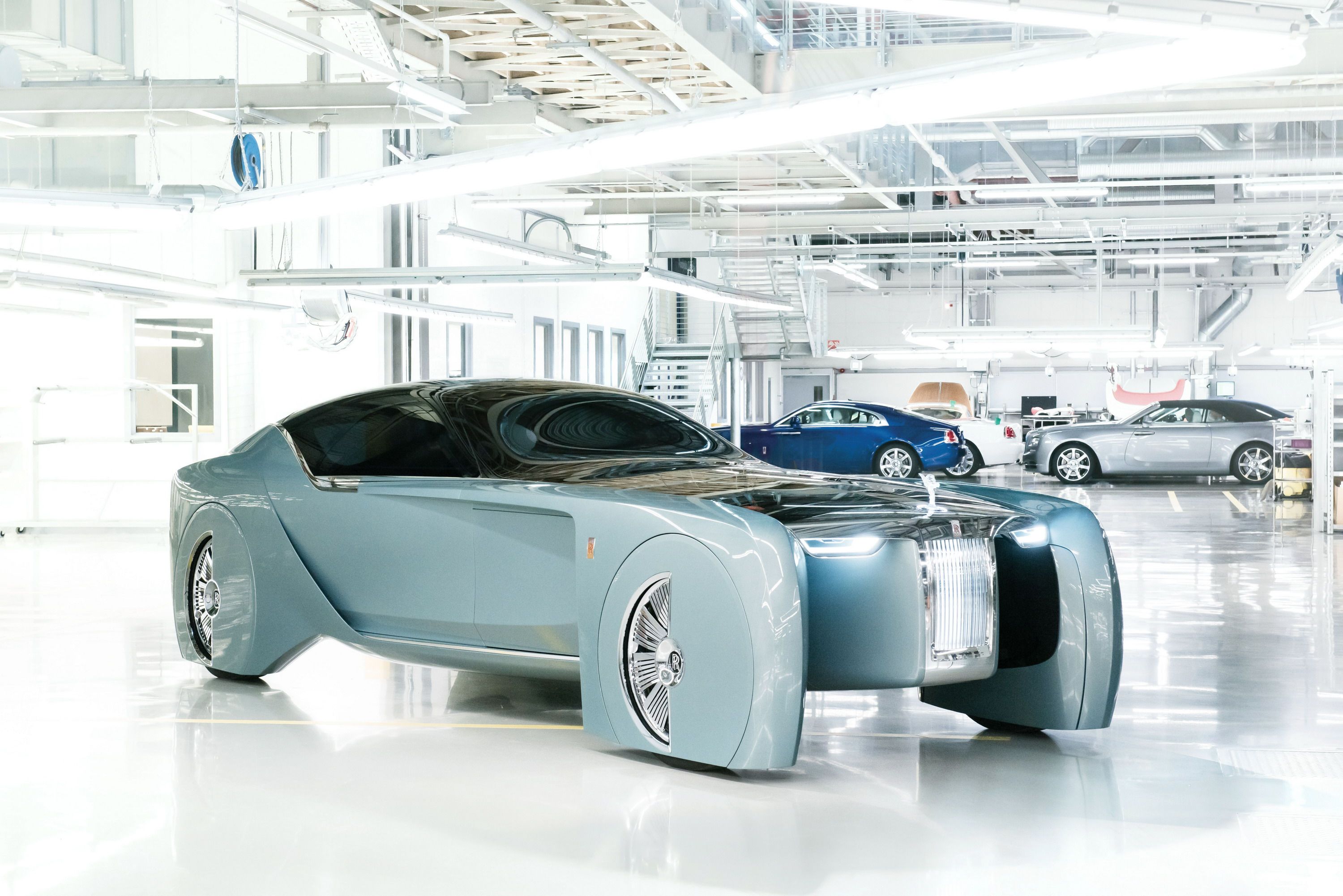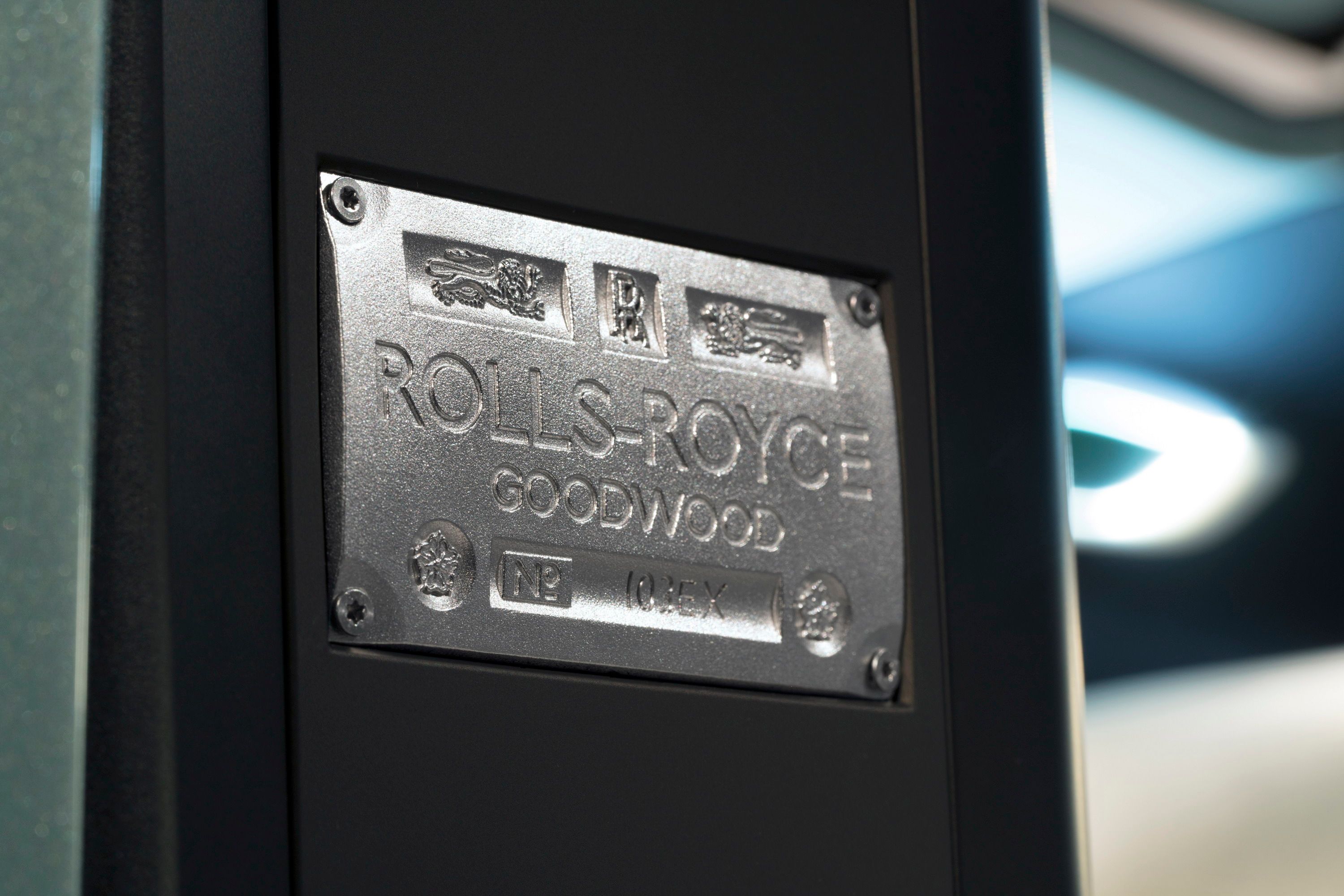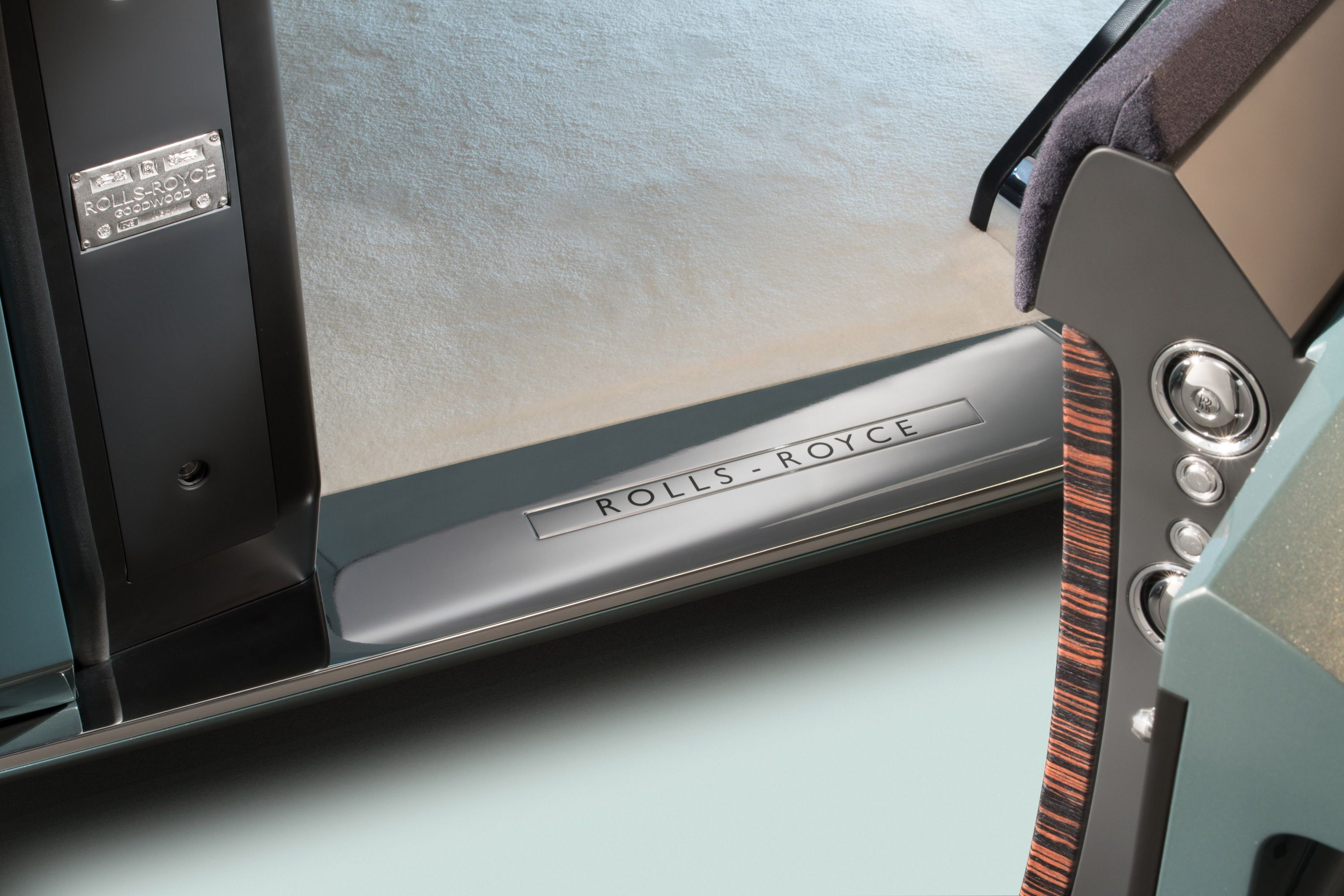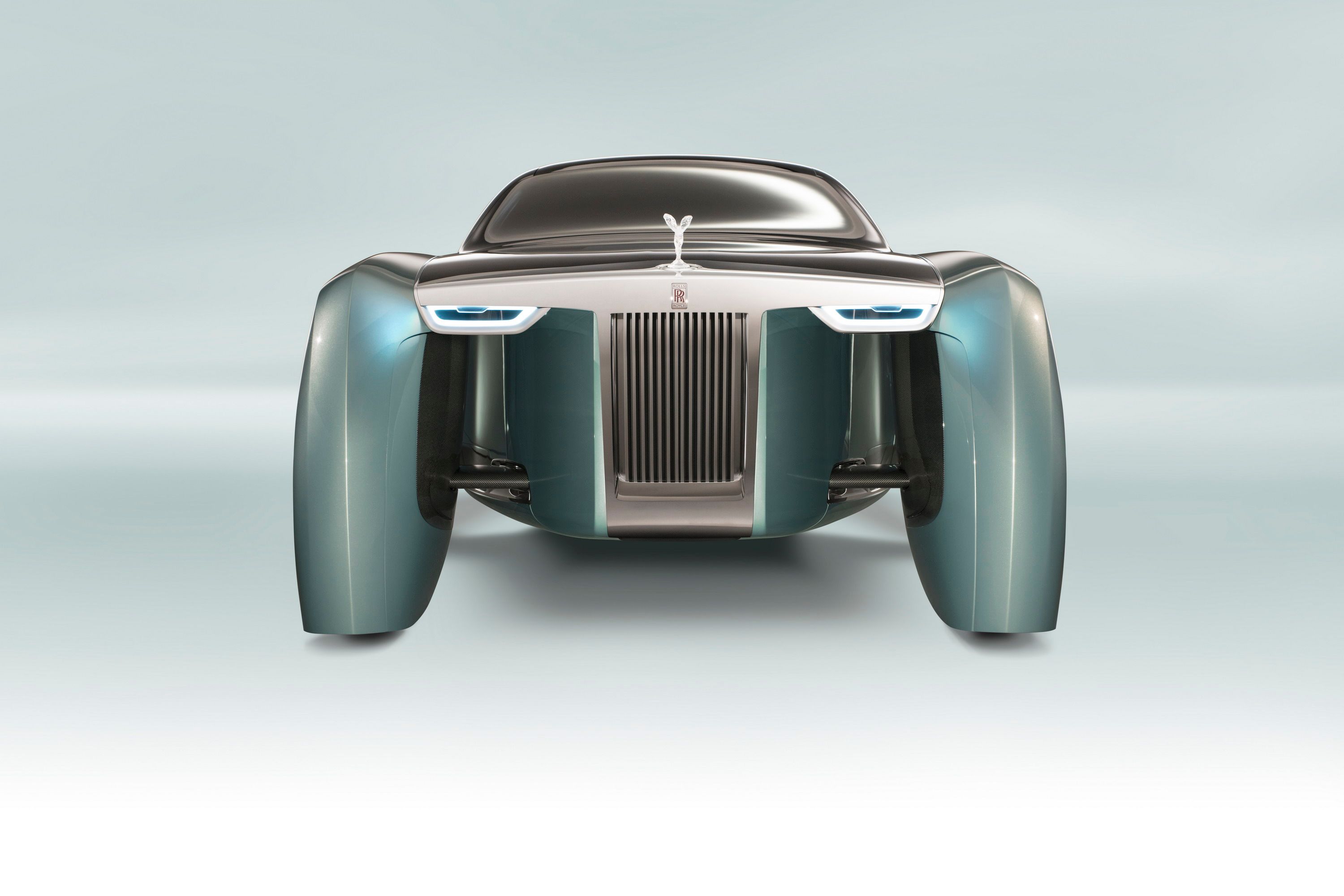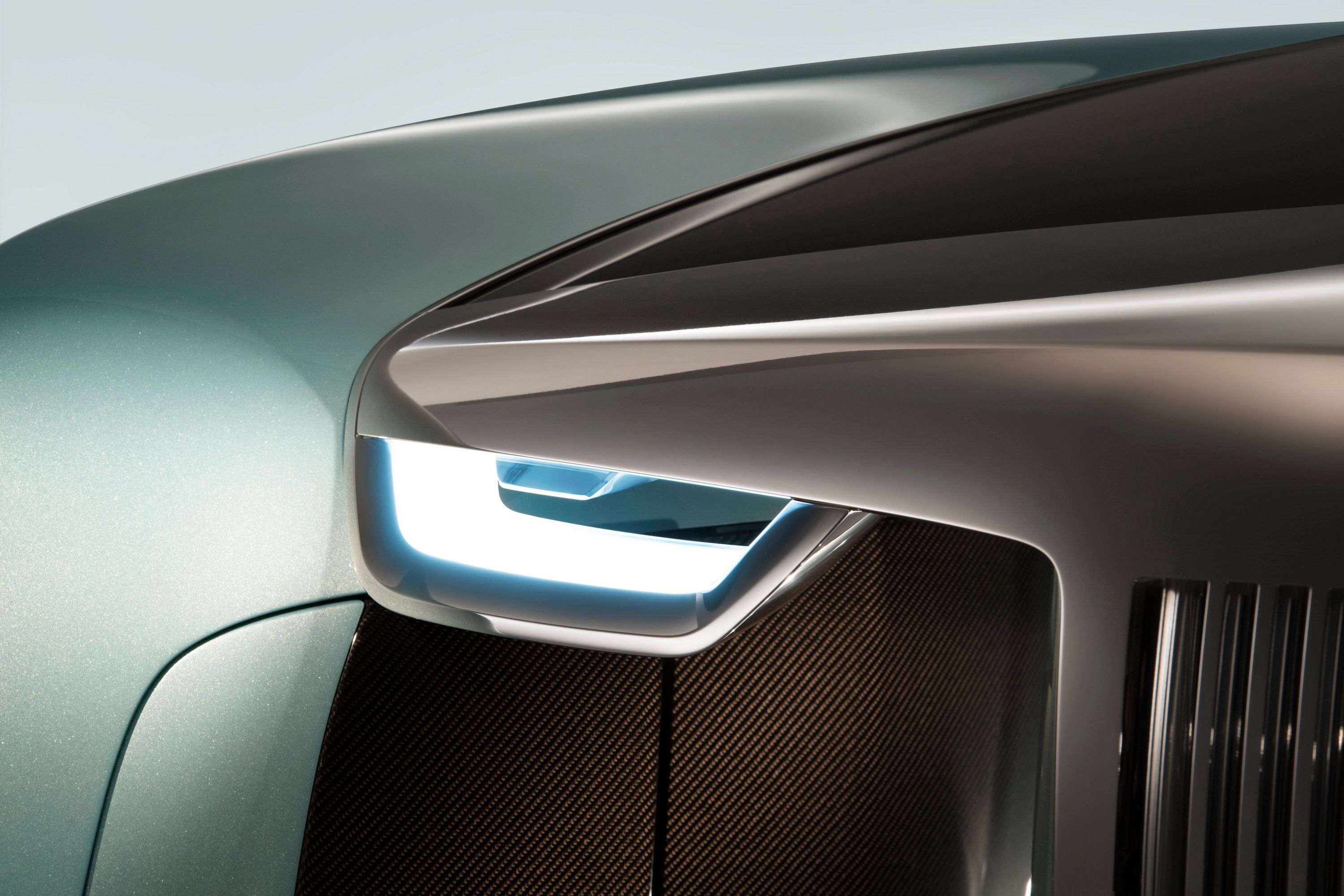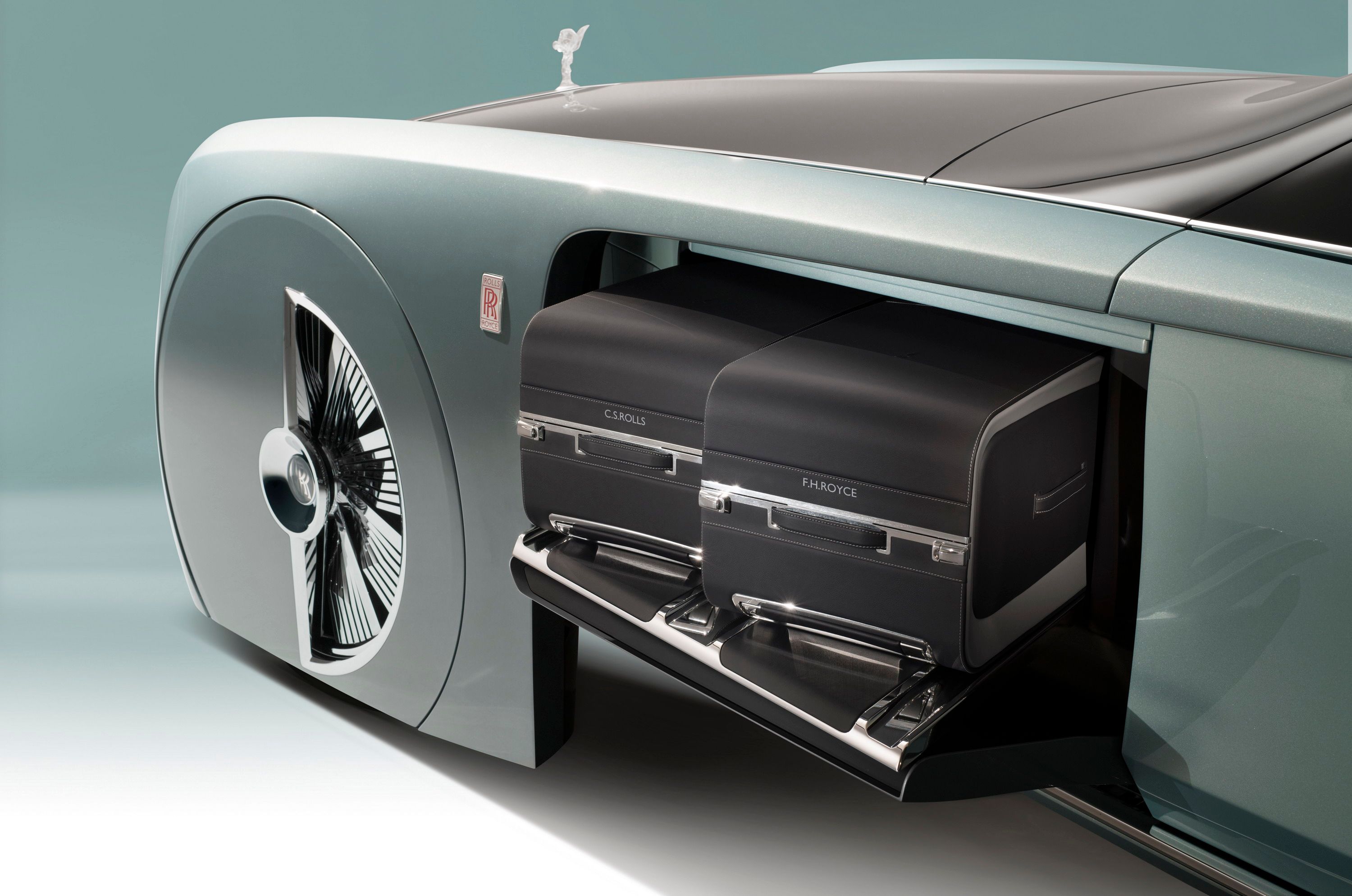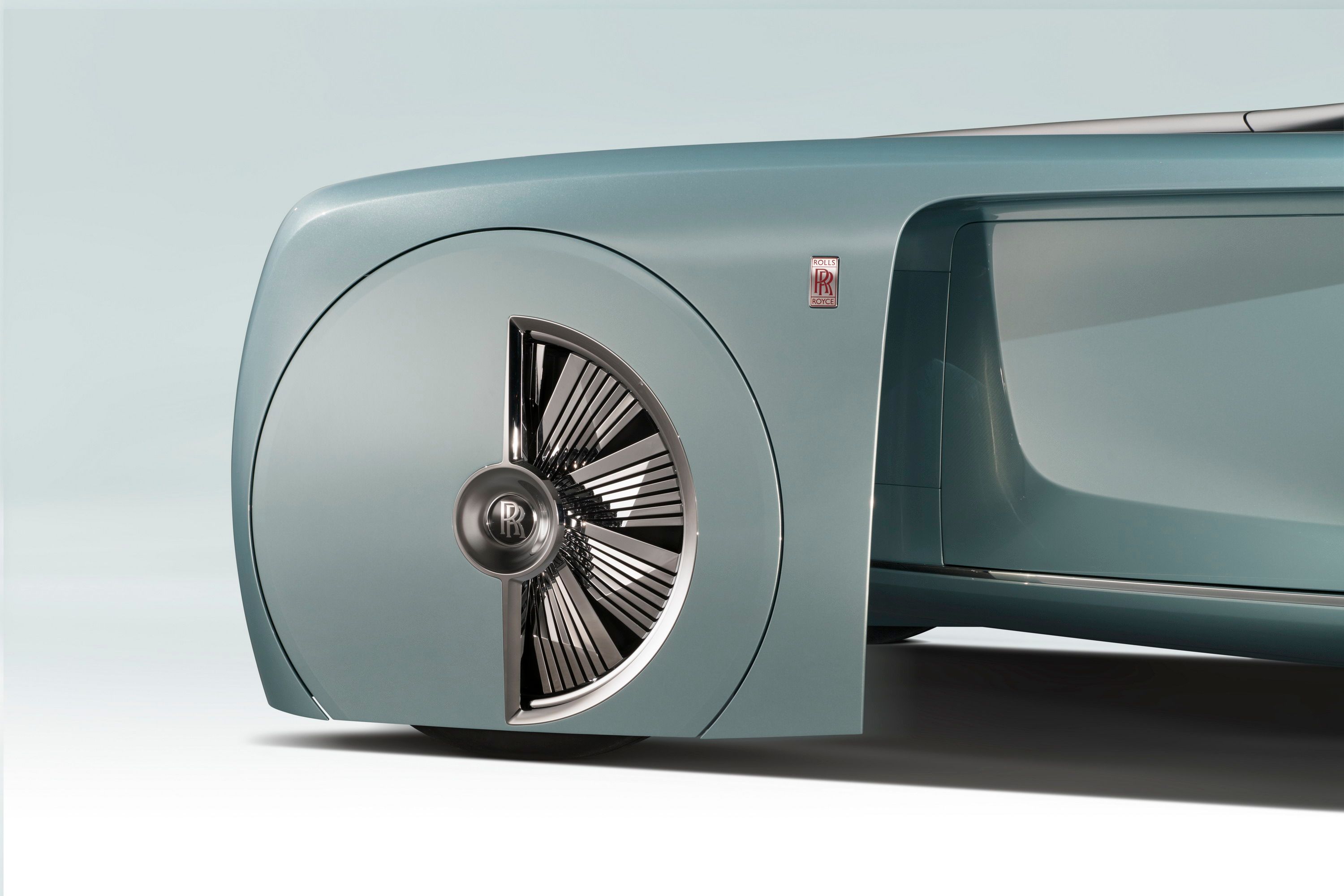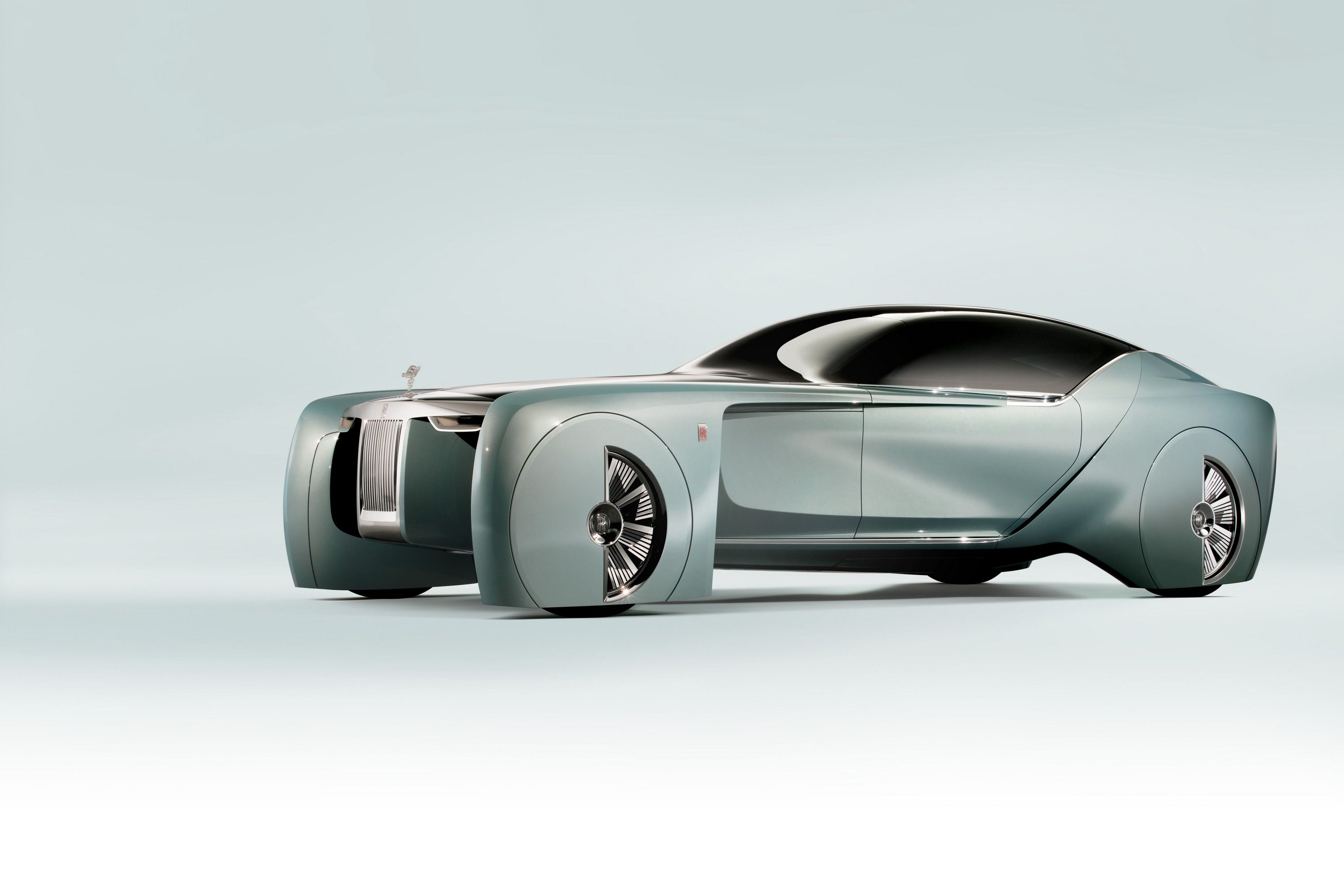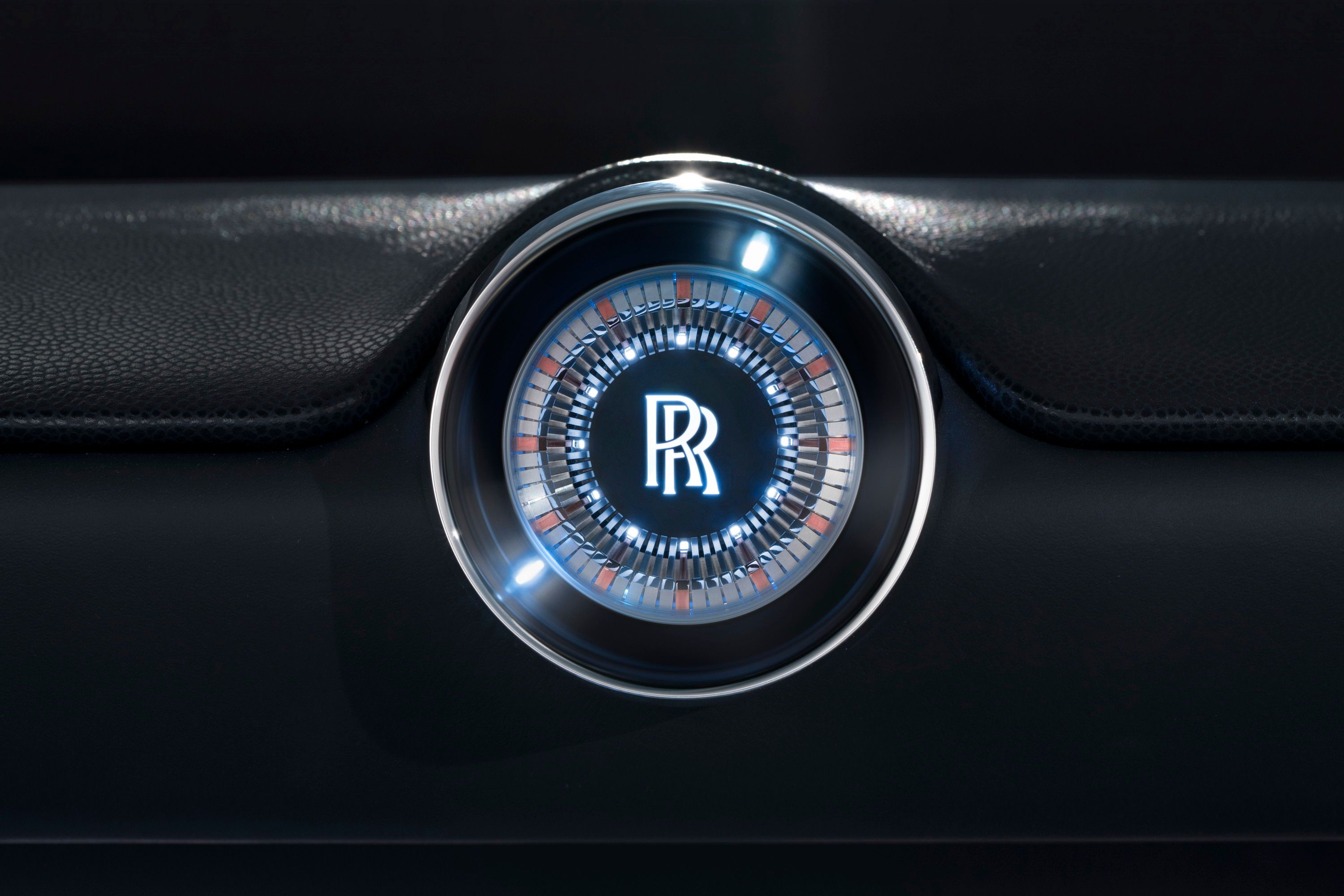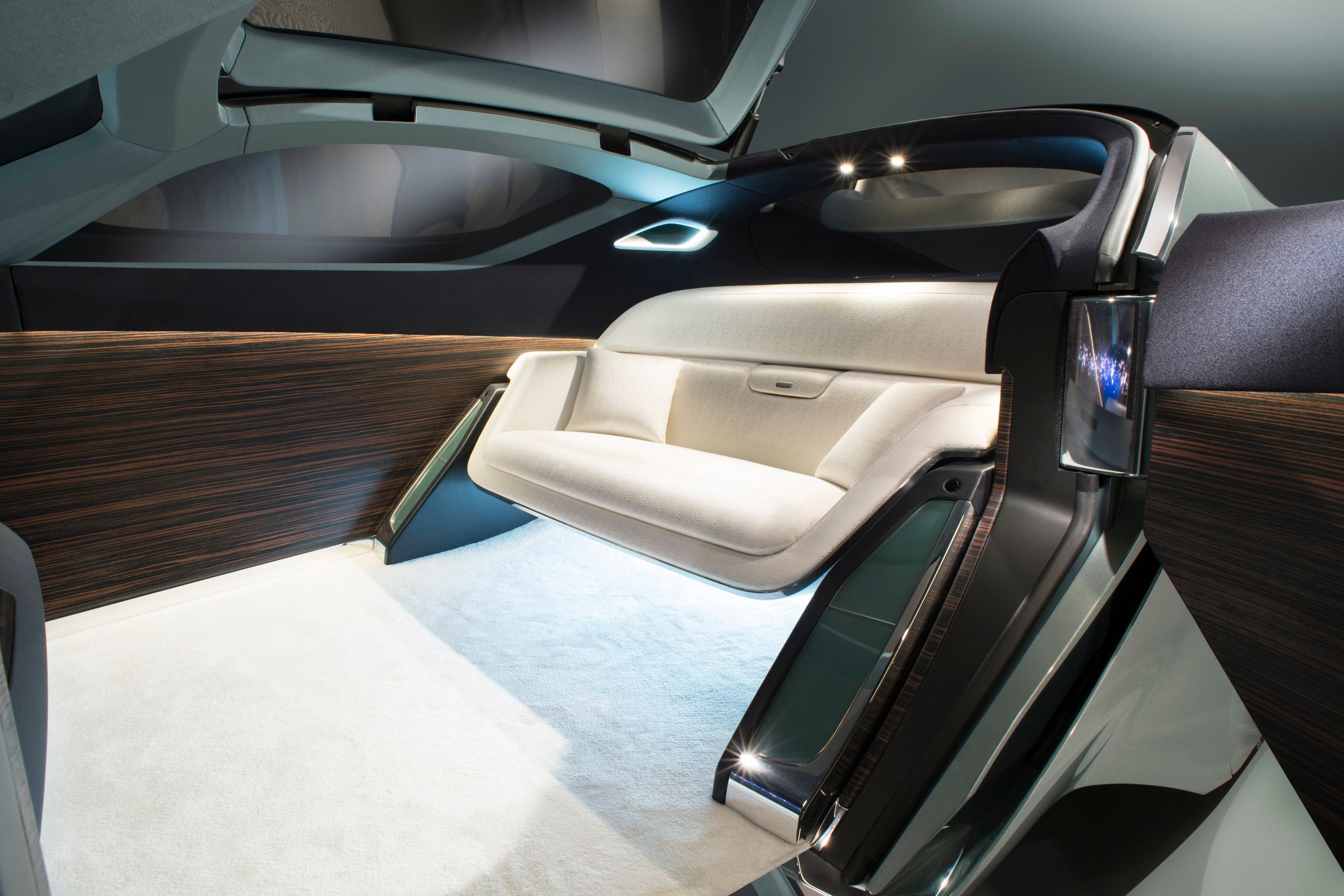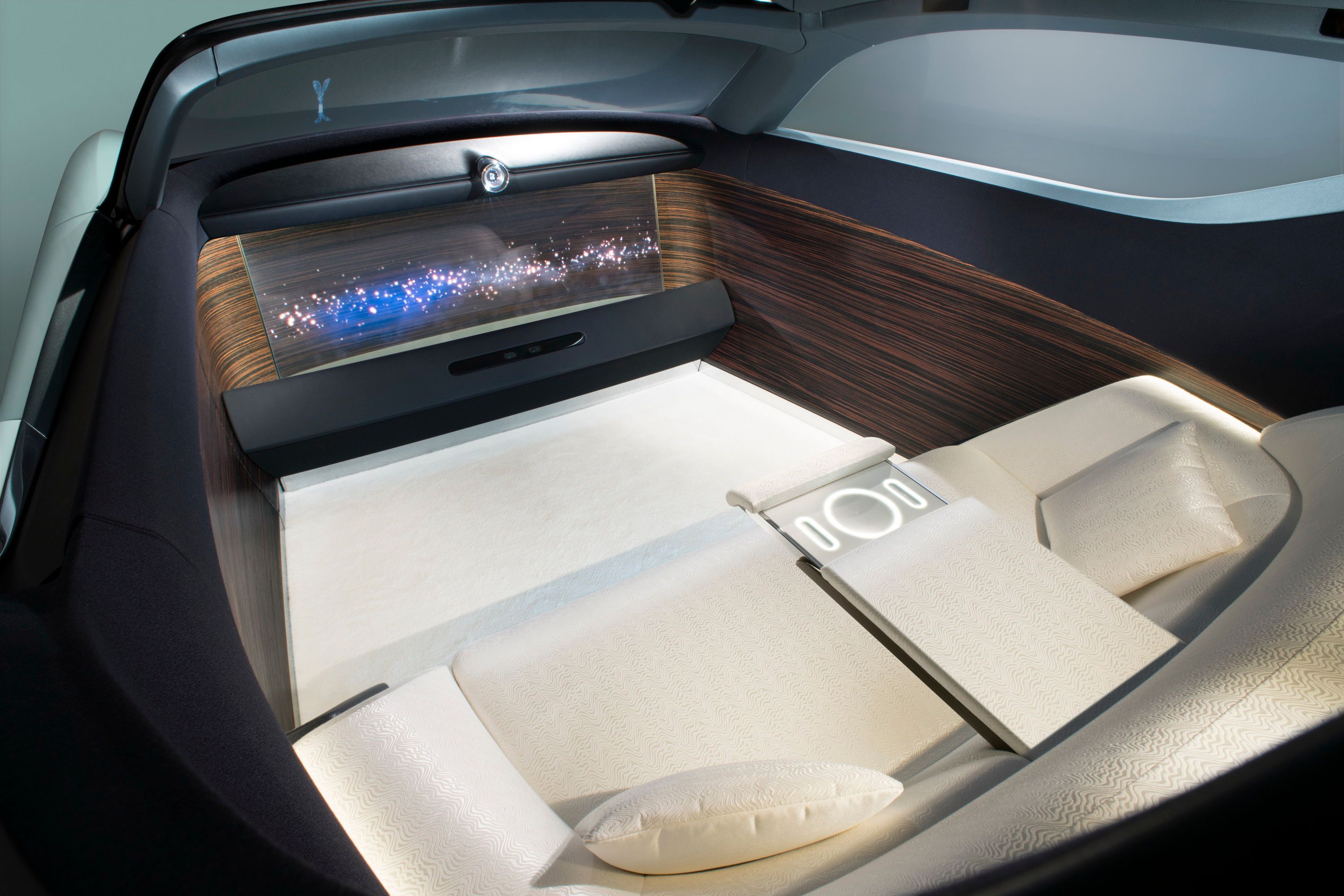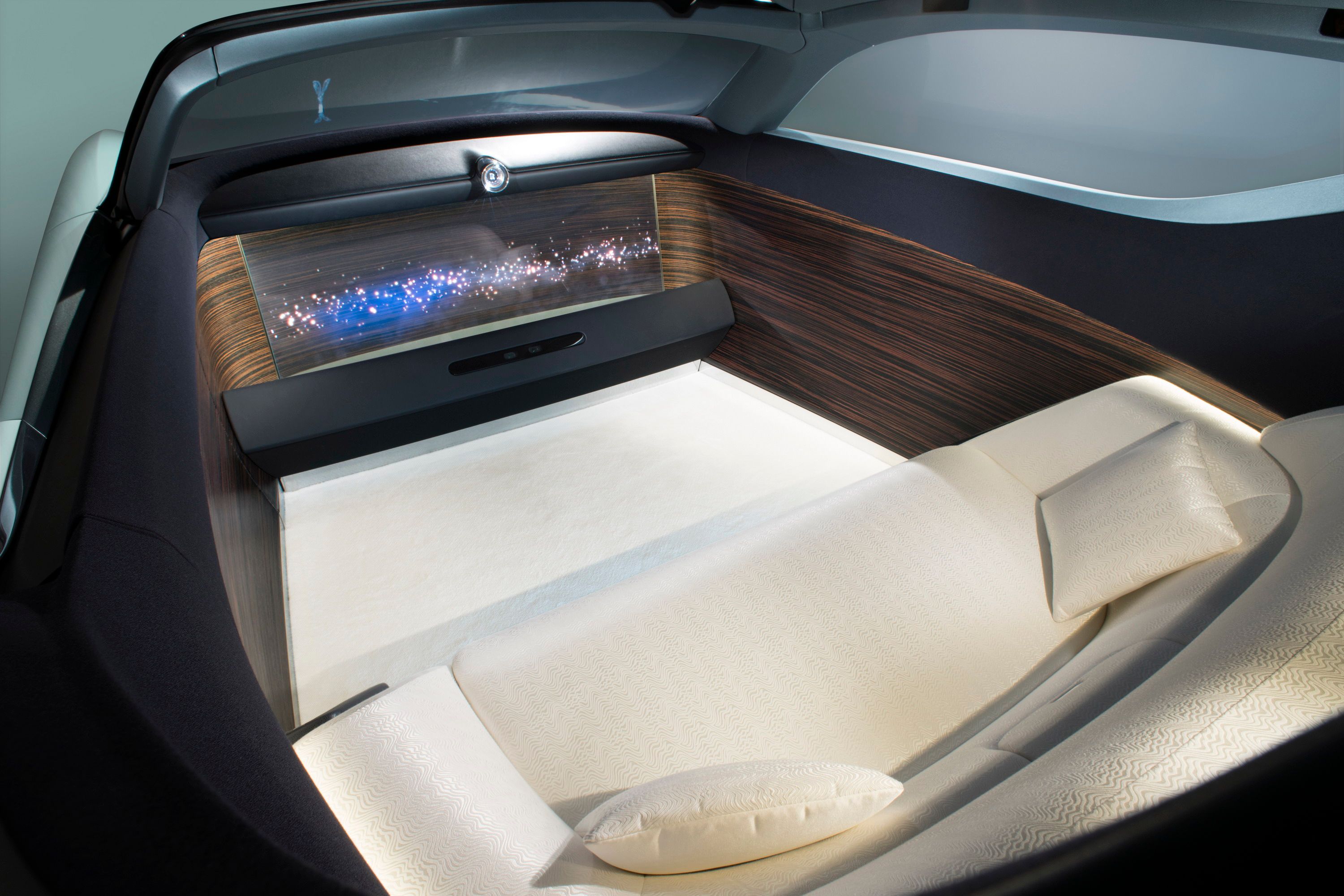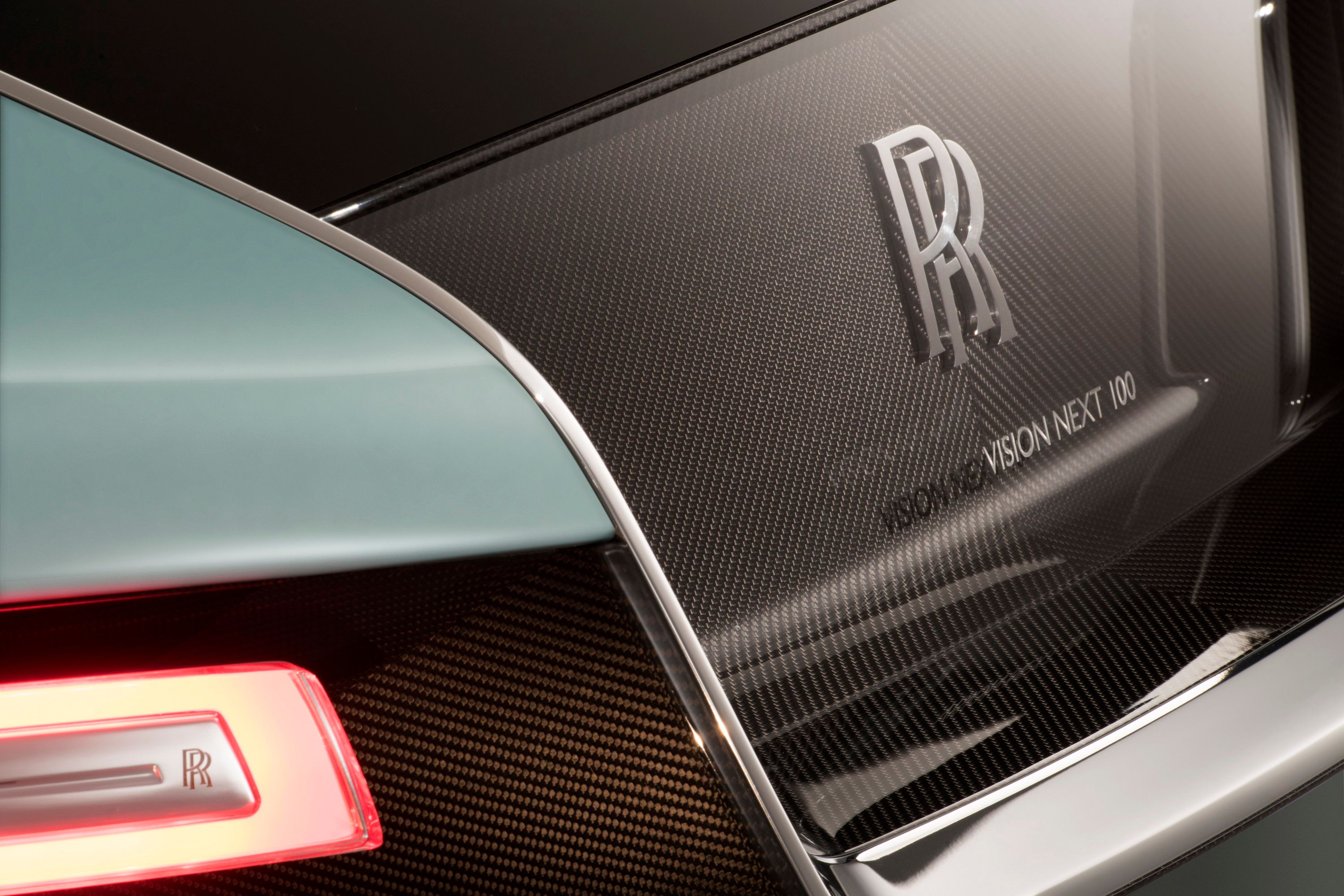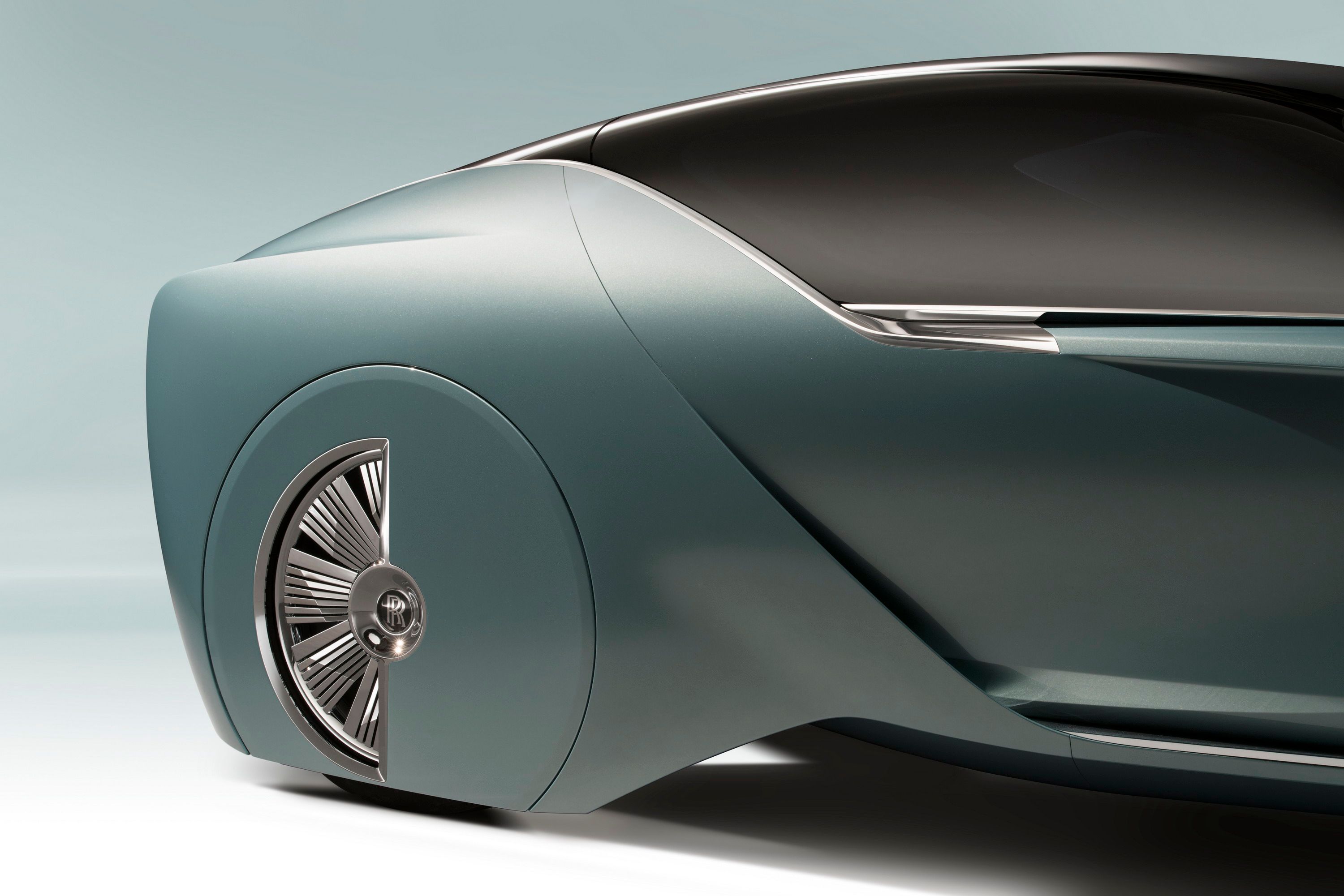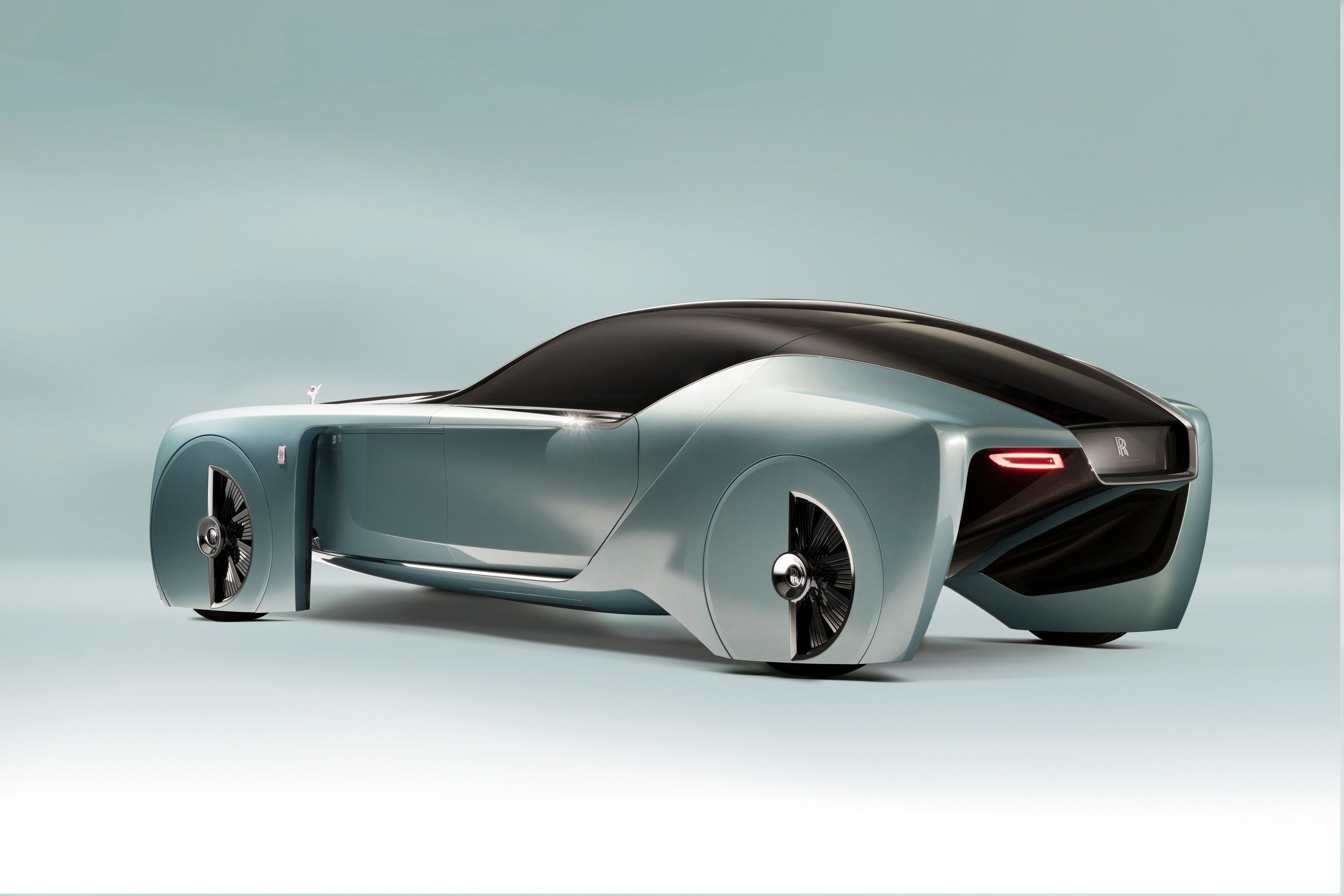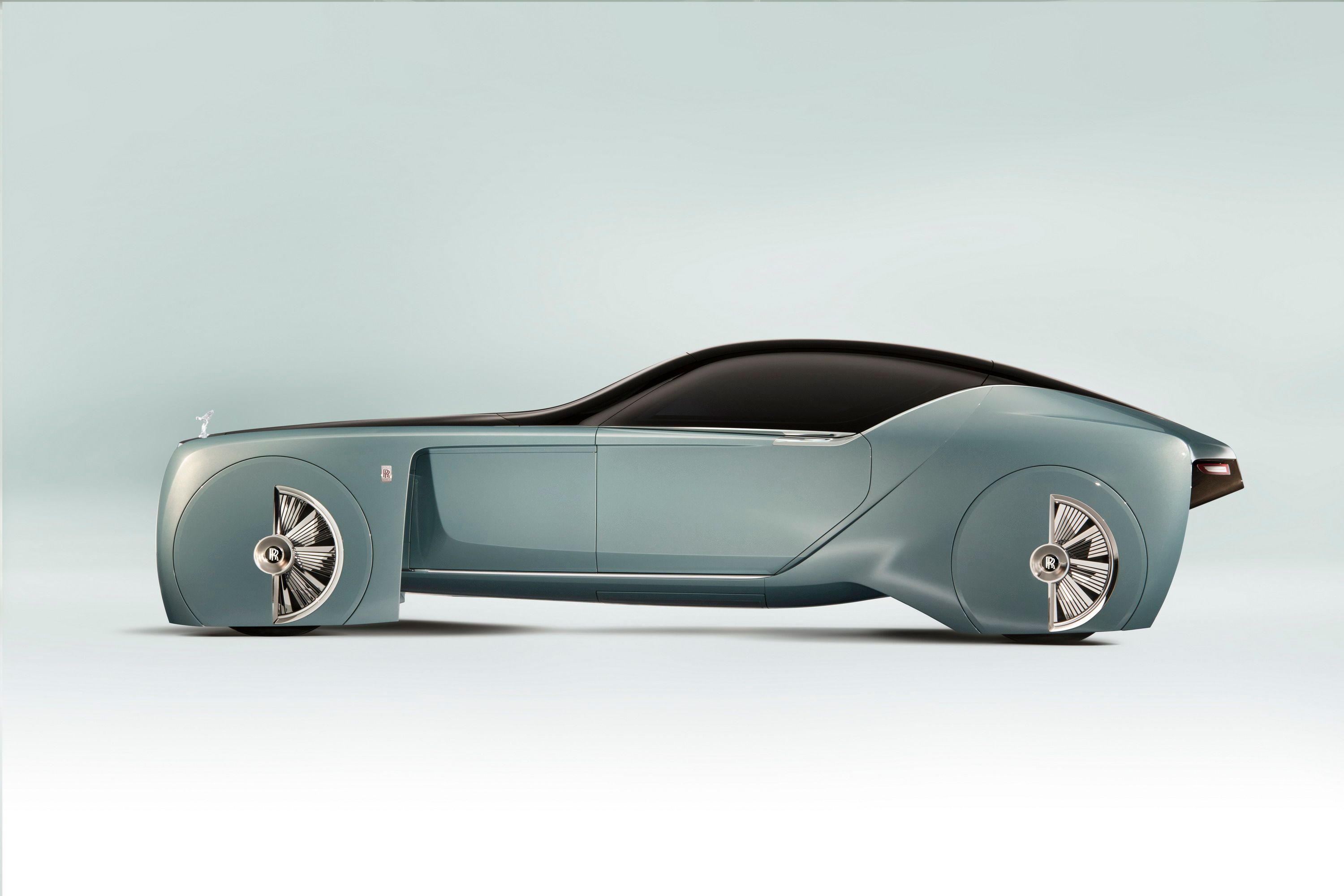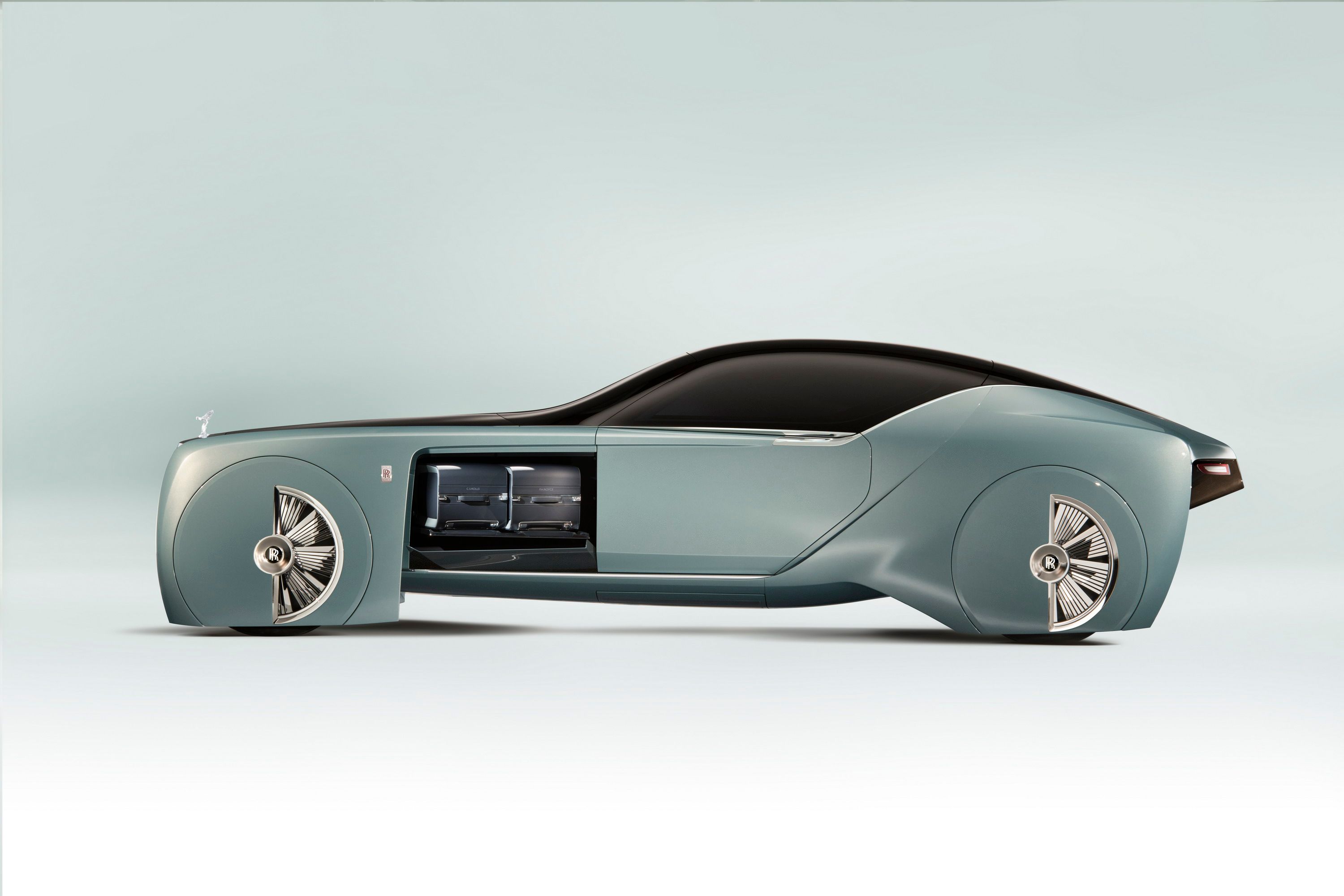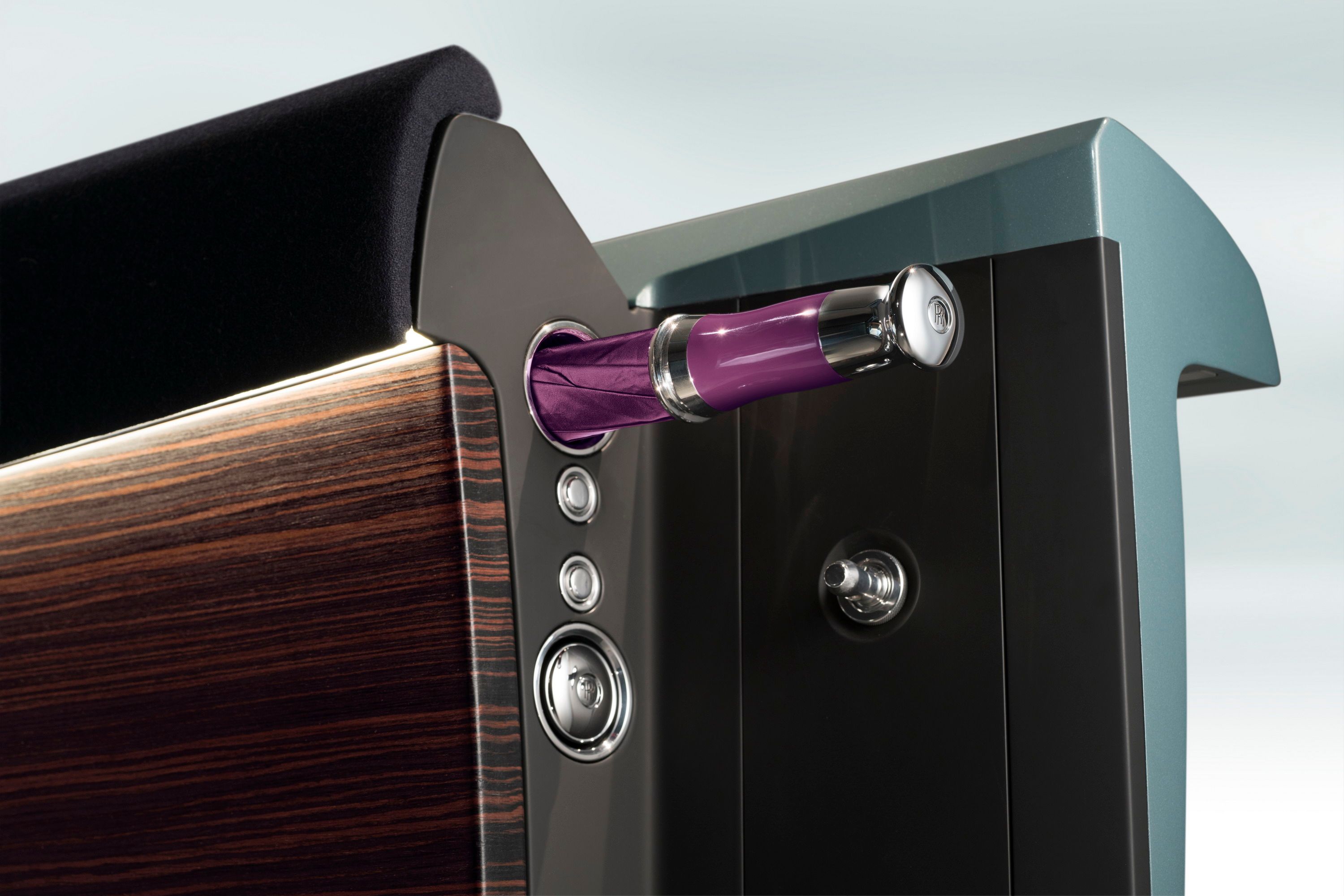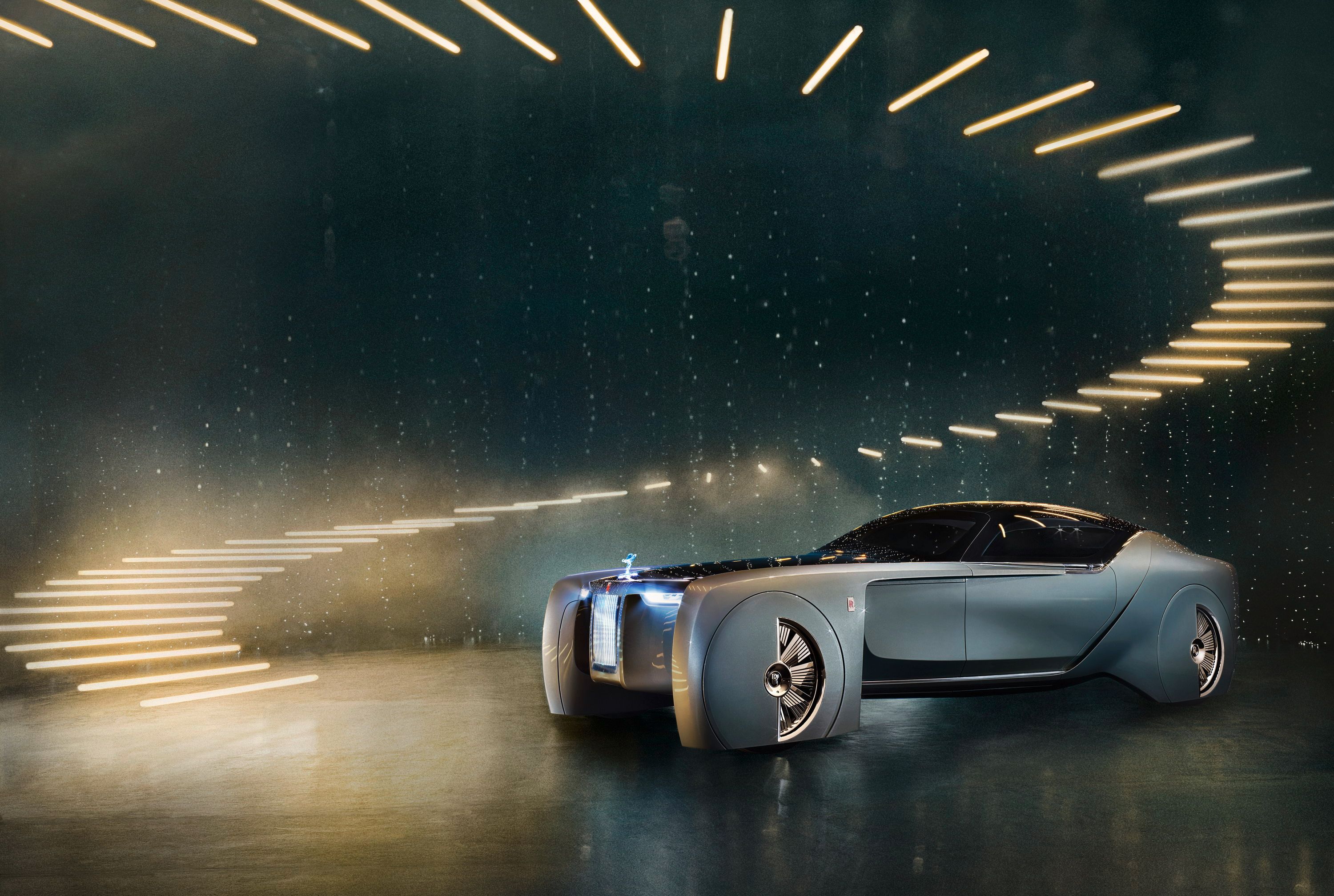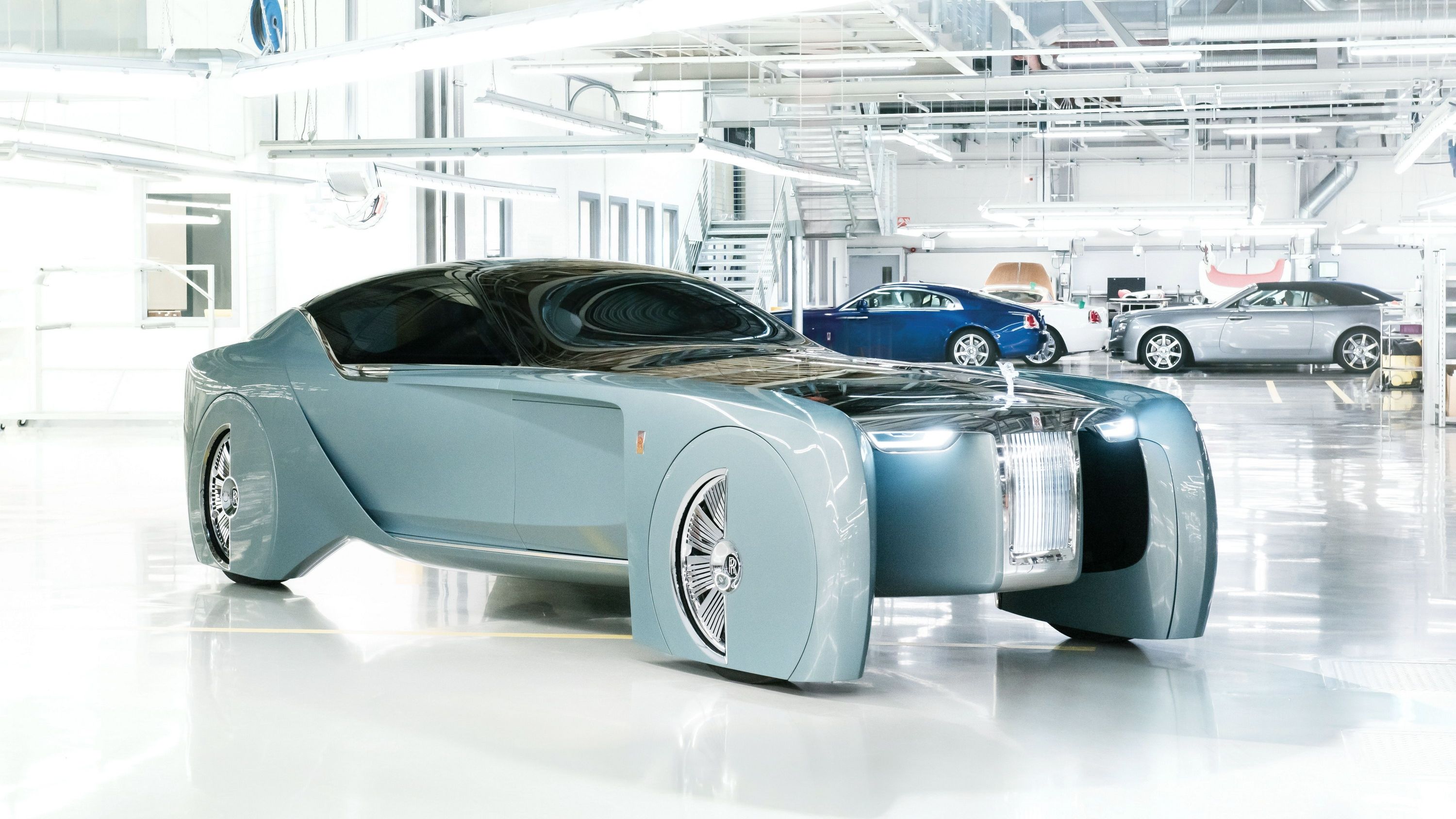The Rolls-Royce Vision Next 100 is a concept car the British brand built as part of BMW's 100 anniversary celebration in 2016. It is part of a four-model lineup that includes show cars from BMW and the other two companies under German ownership -- Mini and BMW Motorrad. Unveiled at an event at London's Roundhouse, the Vision Next 100 is a preview of things to come and Rolls-Royce's wildest concept car design yet.
Codenamed 103EX, the Vision Next 100 also represents the completion of the first phase of Rolls-Royce's renaissance under BMW ownership. The British firm was purchased by the Munich-based company in 1998 and renamed Rolls-Royce Motor Cars. Under the BMW Group, Rolls-Royce developed the already iconic Phantom and Ghost, and is preparing to launch its first-ever SUV, currently known as the Cullinan.
“With the Rolls-Royce VISION NEXT 100 we were mindful not to dwell on the past. We wanted to be as innovative as possible and at the same time transcend the design history of the marque,” said Giles Taylor, Director of Design, Rolls-Royce Motor Cars.
Much like the BMW and Mini Vision Next 100 show cars, Rolls-Royce's concept isn't intended for production. Although some styling cues and technology will be implemented at some point, the Vision Next 100 is largely a design exercise and a glimpse into what cars may offer in the very distant future.
Update 06/20/2016: We've created a new video to highlight the best features of the Rolls-Royce Vision Next 100 aka 103EX. Click play to watch it!
Continue reading to learn more about the Rolls-Royce Vision Next 100.
2016 Rolls-Royce Vision Next 100
- Make: Array
- Model: 2016 Rolls-Royce Vision Next 100
- [do not use] Vehicle Model: Array
Exterior
Arguably the wildest design ever crafted by the folks over at Rolls-Royce, the Vision Next 100 is as futurist as they get. Although it remains recognizable as a Rolls-Royce thanks to the Spirit of Ecstasy emblem on the nose, the massive Pantheon grille, and the long hood, the concept has very little in common with the company's current design language.
The first thing that catches the eye is the unconventional design of the front fenders, which envelop the large, 28-inch wheels almost completely, creating the impression that the vehicle is floating rather than sitting on four wheels. The feature is obviously inspired by old Rolls-Royce models of the 1920s, long before cycle-style fenders were integrated into the body.
Because of the massive wheels, which are made from 65 individual pieces of aluminum, the grille and the headlamps sit pretty high above the ground. This gives the concept a commanding appearance, but at the same time makes it look boxy and awkward when seen from the front. The vertical grille and the nearly flat, horizontal headlamps don't really seem to fit the more rounded design of the front fenders, but I guess this is what concepts are all about: going wild and ditching the conventional.
When viewed from the side, the Vision Next 100 displays a much cleaner and, I dare say, less futuristic approach. Granted, the massive fenders still get in the way, but the overall shape is that of a massive yet sleek coupe. Here, Rolls-Royce once again looked back on its early models. The rising beltline that thrusts upward from where a B-pillar should be is reminiscent of the pre-WWII models, while the rear sections reminds me of the boat-tail design used by many luxury automakers, including Rolls-Royce, Auburn, and Duesenberg, in the 1930s.
The rear fascia also floats high above the ground with the lower section designed like a race car diffuser. Rolls-Royce obviously spent a lot of time in the wind tunnel with this vehicle, but I wouldn't bet on seeing something this radical on a production model soon.
Another interesting feature is the fastback roof made entirely of dark glass from the windscreen all the way to the decklid. Designed as an aircraft canopy, it is hinged to the left and lifts to allow the occupants to stand inside the cabin. Other highlights include the larger Spirit of Ecstasy emblem harking back to regal Phantoms of the 1920s, the red Double-R badge that stands for "experimental Rolls-Royce," the bespoke Crystal Water color and the illuminating emblem and grille that give the front fascia a mystical glow.
Not surprisingly, Rolls-Royce says that its future vehicles will remain highly customizable and that buyers will have access to even more options.
Interior
Access inside the vehicle is made through the single reverse-hinge door on the left. When both the door and the canopy open, a step emerges from below the running board and projects a red, carpet-like light from the underside of the step as a welcome. Fancy!
Inside, the Vision Next 100 has a simple lounge-like design with Macassar wool paneling on both sides, a massive OLED screen where the dashboard and steering wheel should be, and a sofa instead of regular seats. If you haven't figured it out yet, Rolls-Royce conceived this Vision Next 100 as an autonomous vehicle, which pretty much explains the coupe configuration. With no driver needed, the owner no longer has to travel in the rear seat.
The simple yet stylish looking interior is enhanced by the amazing craftsmanship and high-end materials you'd expect in a Rolls-Royce. The sofa, which is described as a "futuristic interpretation of modern furniture design," is wrapped in ivory-colored silk inspired by early regal cars and the 2015 Phantom Serenity. The showcasing of opulent fabrics continues with the deep-pile ivory wool carpet and the fine leather on the "dashboard."
The trademark analogue clock is also present above the OLED screen, but looks rather out of place on the flat surface. The OLED screen below acts as an infotainment system and displays info about the journey, destination, and "people you are expecting to meet." Don't ask how that works because Rolls-Royce had nothing to say about it.
Finally, the Brits designed the concept car to accommodate more luggage and added a new compartment just aft of the front wheels. This feature reminds me of the 1933 Pierce Arrow Silver Arrow, which had its spare wheels hidden in a similar location on each front fender. Cool!
Drivetrain
Like most futuristic concepts, the Vision Next 100 doesn't have a working drivetrain, but Rolls-Royce made a few comments about the future. With V-12 combustion engines most unlikely to exist in the future, the Brits are planning to give their future models electric motors. It's safe to assume they will be borrowed from BMW and will most likely be able to deliver higher output that today's V-12 units, but it's way to early to take guesses. Rolls-Royce also said that its future chassis will be made from the most advanced materials and that its vehicles will retain the trademark "magic carpet ride."
Conclusion
If I were to describe the Vision Next 100 with just one word, that would be "dramatic." However, dramatic isn't necessarily a good thing when it comes to a Rolls-Royce, which has to be commanding but still elegant in appearance. Sure, this is a concept car and automakers are supposed to go wild once in a while, but this isn't the Rolls-Royce I'd like to see on public roads in the future. Fortunately (at least for me), that won't happen. This ludicrous concept will never see the light of day on the production line and most likely many of its design features will never be used in the future. Still, the Vision Next 100 proves that Rolls-Royce has what it takes to think out of the box.

